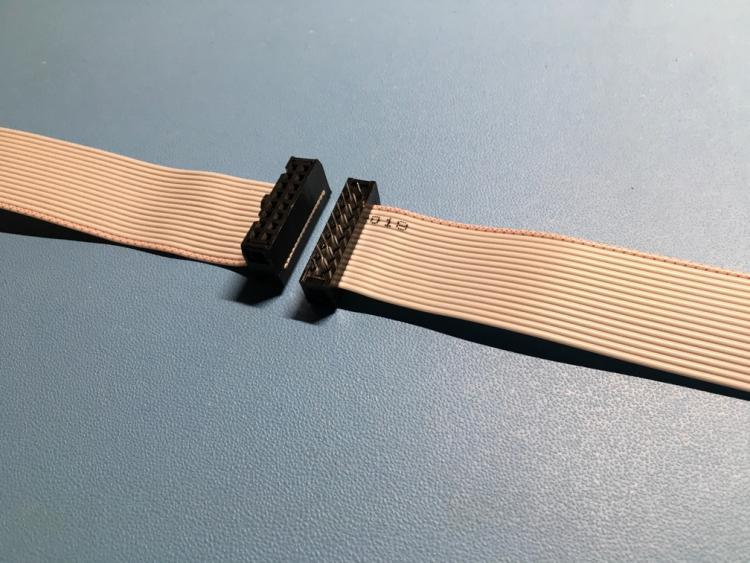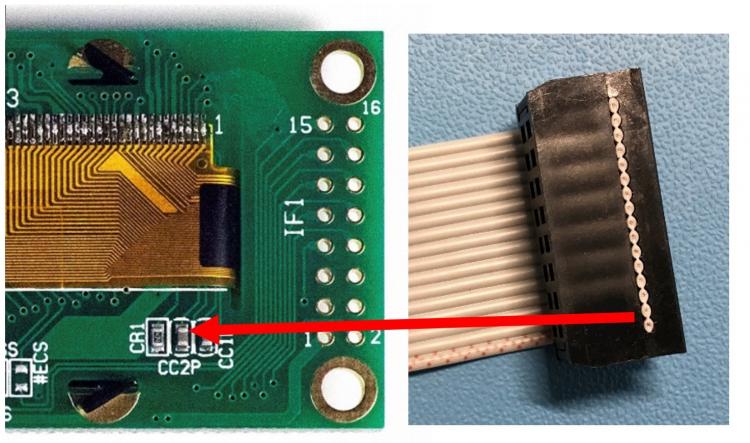-
Posts
64 -
Joined
-
Last visited
-
Days Won
4
Content Type
Profiles
Forums
Blogs
Gallery
Posts posted by CJ55
-
-
Which resistor network are you using exactly? The data sheet (from your link) shows 3 different versions: isolated (-102), bussed (-101) and dual terminator (-104).
You need the bussed ones!
-
Definitely a scam web shop! All fictional prices and pictures stolen from Ebay! New iPad for 20€ instead of 40€! Ha, ha!
-
Here are some order numbers for IDC sockets from Reichelt:
10 pin: „PFL 10“ €0,11
16 pin: „PFL 16“ €0,19
24 pin: „3M 36266600“ €2,25 (only available from 3M, actually I like the cheaper PFL more)
Shipping cost to France: €5,60
-
 1
1
-
-
Ok, I agree to take the burden off your shoulder ;-)
99,- Euro seems to be fair! Could you please give me an estimate of the shipping cost to Germany?
-
@pat_00 It looks like the LED on switch 17 is dead. I had the same problem (strange) with the same effect! First it worked all perfectly well and after some testing the same LEDs as on your picture constantly lit.
Maybe the problem is the bending to fit into the switch and the colored LEDs are more sensible in this regard.
-
You just need to search for „1206“ and „560R“ and you will find a great selection at Mouser and Digikey available. Your first Reichelt link in your last post is also completely ok. Tolerance doesn‘t have to be better than 5%. Your second link to Reichelt is a resistor with 0.1% tolerance: Unnecessary expensive.
-
I have a question regarding the MIDI8 PCB. I thought the I4/PWR port would work as a MIDI IN also when using a DIN8 socket. Mine doesn‘t. So I disassembled the whole SEQ v4+ again to find the failure.
There is no connection between pin4 of the DIN8 and the 220R to the optocoupler pin2.
But there is a connection from the adjacent solderpad to the 220R to the optocoupler pin2. This pad would be used when using a DIN5 socket.
Is this intentionally? Is this a failure on my board? Can I make this connection to the adjacent pad with a solderbridge? Or is there something I do not consider?
-
-
Here is the problem my OLED had:
It took some time to find out the real problem. First I thought it was a problem with the OLED PCB, because slightly twisting it on the left side got the display fully working. And of course I testet the header, connector and cable twice before.
So here is the problem:
The unisolated end of the flat cable had contact with a capacitor on the OLED PCB. I prepared a picture showing it a bit clearer:
I think this problem could happen to everyone and the solution is to use a bit of isolating tape between the connector and the PCB, especially the three components the arrow is pointing at in the picture above.
-
Happy New Year!
Number 6 has a nice working OLED now! I will write something about how I fixed the problem in the Troubleshooting thread. Thank you Peter and Andy for your offer to replace the OLED!
-
 1
1
-
-
Unfortunately I have a bad Display :-( On one OLED only the second half of it is lighting up. The first half is very, very dim. I ruled out the connector and the cable. It‘s a problem somewhere on the OLED PCB. When I bend it (twisting it) a little bit on the left side, the display shortly comes to full life. Can not find the problem. Most likely a cold solder joint on the 43 pin flex strip.
I am building this SEQ for someone else and he is waiting yearningly for it. Bought it as part of a Midiphy kit. What shall I do?
-
Hello Super-Samurai,
if you want, I can build one for you. I‘m an experienced professional in Germany ;-) At least regarding electronics. I have a SEQ V4 and consider building a SEQ V4+ for myself.
Just write me a message!
-
Maybe a voltage problem? I see in your pictures that you use the Mini-USB- port.
The 5V of the Mini-USB port goes through a BAT60J diode to the board. It has a voltage drop of 0.28V... 0.58V depending on the current flowing through it.
Do you have the same problem when using the Micro-USB port or an external power supply?
-
Are you using the Micro-USB or the Mini-USB port for powering your SEQ?
The 5V of the Micro-USB port is directly connected to PA9 which is then connected via the jumper J17 to the board. Exactly the same as you power your setup via J2. Should be no difference.
The 5V of the Mini-USB port goes through a BAT60J diode to the board. It has a voltage drop of 0.28V... 0.58V depending on the current flowing through it.
-
For an aluminium panel you could ask forum member julianf (http://midibox.org/forums/profile/5349-julianf/)
There is also (somewhere) a file awaylable for an complete acrylic case.
These pages are most useful for the parts needed (all easy to source, the PCBs were always the hardest parts to order):
http://wiki.midibox.org/doku.php?id=mididocs:seq:building
http://wiki.midibox.org/doku.php?id=wilba_mb_seq_parts_guide
http://wiki.midibox.org/doku.php?id=wilba_mb_seq_pcb_bulk_order
-
I just saw that Modular Addict is selling the whole range of MIDIbox PCBs.
https://modularaddict.com/manufacturer/midibox
They even have the (Wilba) SEQ V4 CS PCB available.
Edit: and now I saw that there is already a thread about it here:
-
I think, I will build a second Midibox SEQ V4(+) soon!

I see you are using a Core407Z. Do you need a JTAG or SWD programmer (st-link v2) for it? Have you tested it already with the midibox seq firmware? I like that is much smaller than the Discovery board!
I like your USB module! I build something similar with switching between USB B and USB A (Host). How do you connect your USB module to the core?
-
Thanks for your answers!
-
Wow, thank you! Great work!
Does it work with all kind of Launchpads?
Is it correct that the code will run on a raspberry pi? Any raspberry pi?
It would be really nice if you could write a little beginner guidance, how to set up the raspberry pi, sometime in the future.
-
A voltage regulator like the 7805 needs an input voltage that is higher than the regulated output voltage. The 7805 needs an input voltage between 7V and 25V to output 5V.
-
The problems with the OLEDs is most likely a power related problem.
The 3.3V Regulator (LD3985M33R) on the STM32F4 Discovery board only provides 3.0V (because of a BAT60 diode in series to the output) and can deliver only 150mA of current. And it has to power the whole STM32F4 board. So there are only <100mA left for external components like the OLEDs.
The Raystar datasheet mentions 60mA for 50% check board (whatever this means). With 2 OLEDs your are already at 120mA. There might be conditions where this will work. But it will not be very reliable!
Other OLEDs (especially white on black ones) probably need much more current then the tiny onboard regulator can deliver.
This is only a problem for OLEDs which need 3.3V to work. 5V OLEDs should not have a problem as long as your external power supply can deliver enough current.
-
You can do ramps with the ALL button. See 4.2.3 of the beginners guide: http://wiki.midibox.org/doku.php?id=mididocs:seq:beginners_guide:start#working_on_the_edit_page
...if you move any knob other than the one in the current cursor position, the sequencer will generate a descending or ascending ramp between the present cursor position and the knob you turn. This way you can generate e.g. velocity ramps easily...
-
8 hours ago, Altitude said:
I was thinking down the road a bit and adding a DOUT/DIN header so you can expand that chain to euro TPD module..
Cool! Exactly what I need!
-
Yes, great work! I am interested in a PCB set.





LCD problem, help?
in MIDIbox SID
Posted
Pin15 (Vee) on the Midas display is a negative voltage OUTPUT! So do not connect this pin to your Midibox PCB. Instead connect it like in the circuit from the data sheet with a 10k-20k trimmer to Pin3 (Vo) and Pin2 (Vdd). In this case Pin3 also must not be connected to your Midibox PCB.